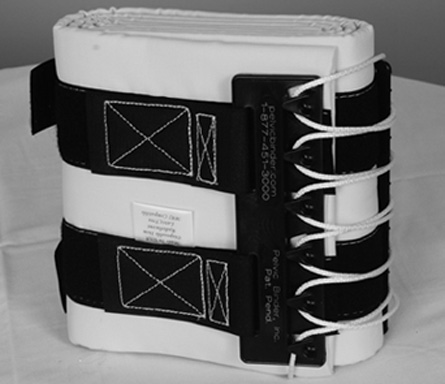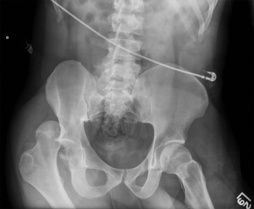Chapter 11 Pelvis and Lower Extremity Reduction
Pelvis reduction
Overview
1. Application of a pelvic binder is a key step in the initial management of an unstable pelvic fracture.
3. Venous bleeding is the most common cause of hemorrhage in a patient with hemodynamic instability and an unstable pelvic fracture.
Indications for Use
1. Note that placement of a pelvic binder is not contraindicated in a patient with a lateral compression–type injury.
Precautions
2. Perform a careful physical examination before applying a binder. Determine if the fracture is open or closed.
Pearls
1. Although commercial binders are easier to apply than a bed sheet, not all emergency departments are equipped with commercial binders, so it is important to know how to use both a commercial binder and a bed sheet.
Detailed Technique
3. Roll the patient. A standard trauma log-roll technique should be used to place the commercial binder or bed sheet under the patient (Figure 11-3), with additional people at the legs and the head.
4. If a bed sheet is being used, place it as widely as possible over the greater trochanter and ASIS.
Hip reduction
Overview
3. The incidence of dislocated hips is much higher in patients with hip arthroplasty compared with patients who do not have hip arthroplasty.
5. Relocation of hips can be difficult because of the significant muscular and ligamentous impediments inherent to the joint.
6. In patients with traumatic dislocations, relocation is easier because of the associated posterior wall acetabular fracture.

















